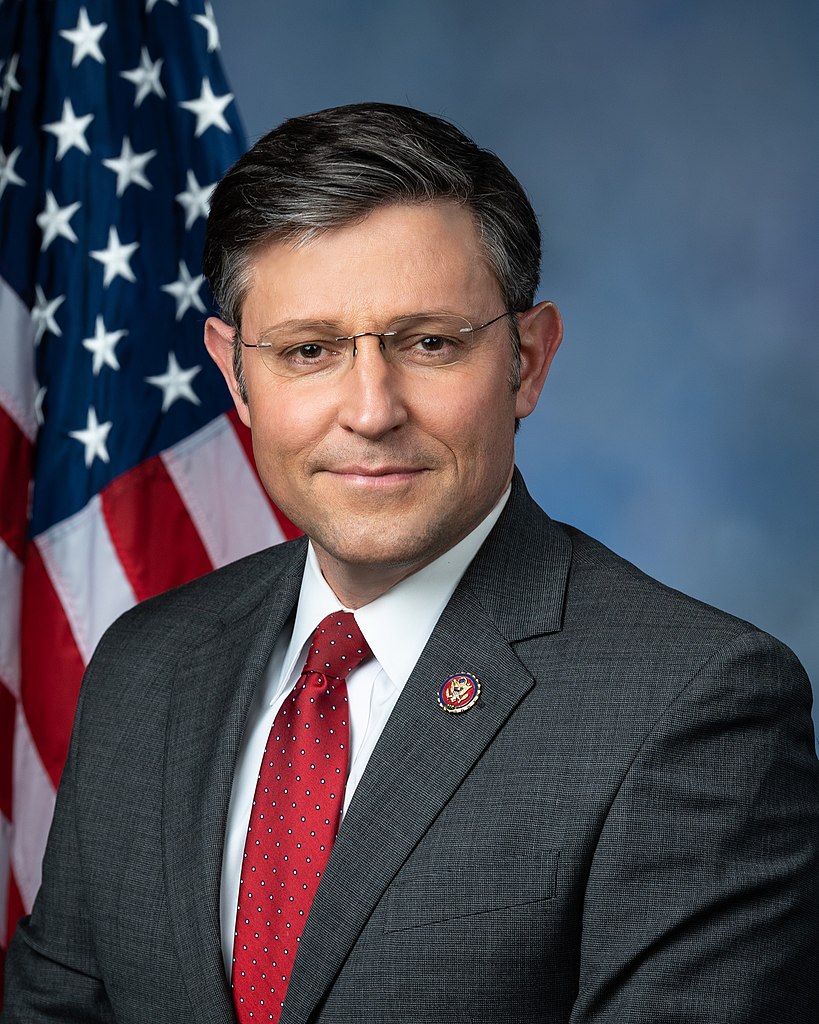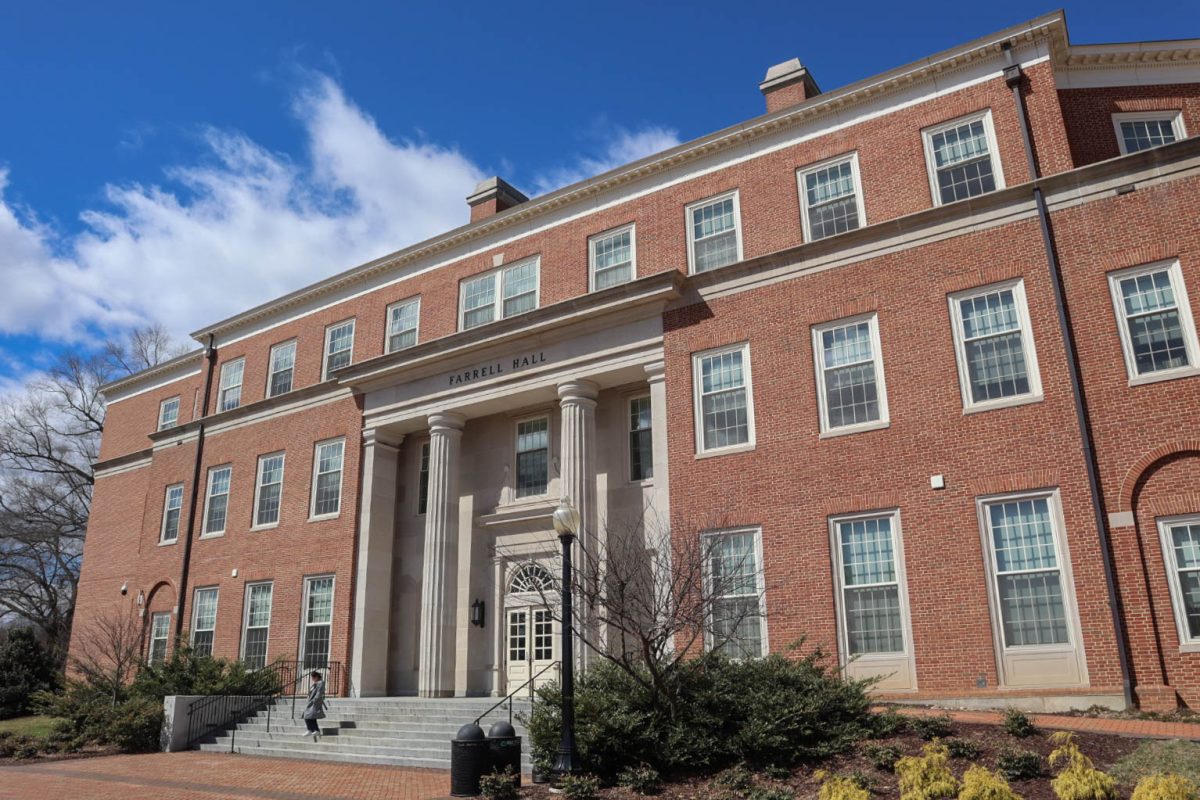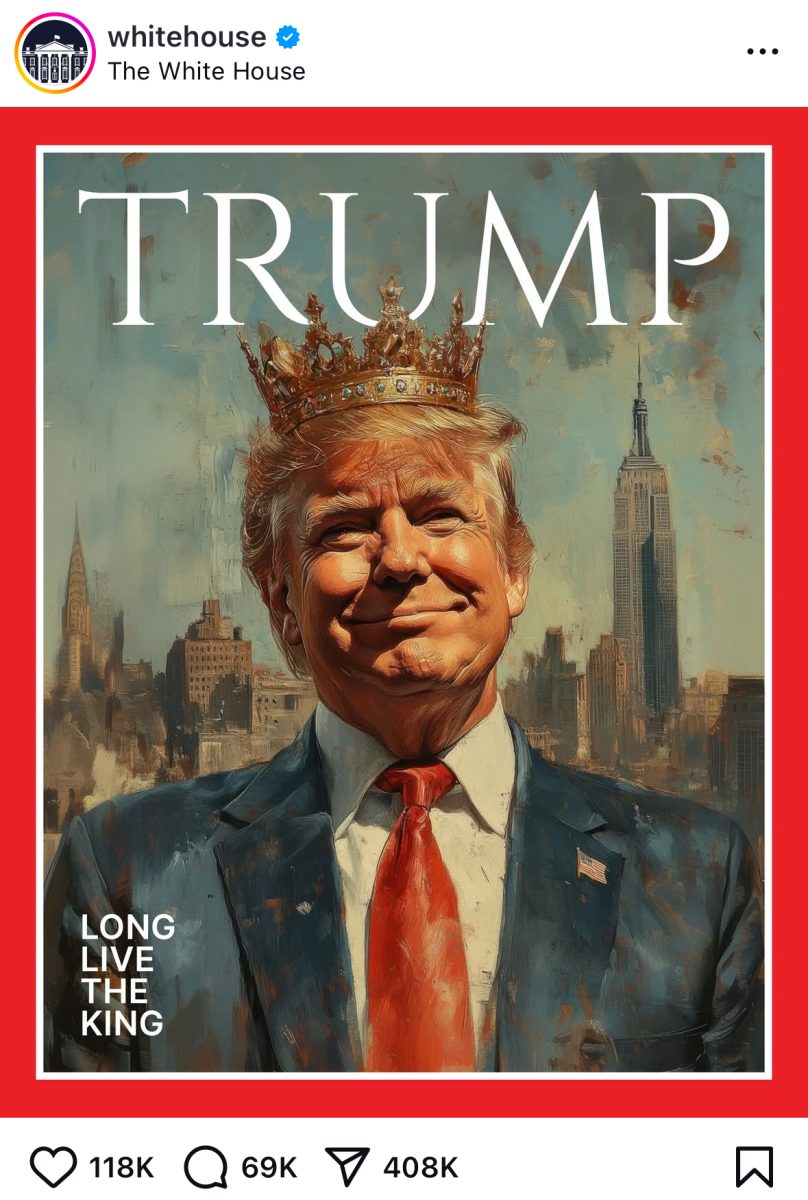As the opinion editor for the Old Gold and Black, it is well within my authority to admit that my section has what some would call a flaw. Namely, we receive and therefore publish many more left-leaning articles than we do conservative ones. Campus conservatives, like the ones who write for the Wake Forest Review, often like to point out that liberals create echo chambers for themselves and shut conservative opinions out of the media. Sometimes they are right. This very issue is why The Review’s founders felt it necessary to create a conservative echo chamber of their own.
I am very weary of allowing my section to turn into fodder for conservative students — to become another example of a once fine publication that, in their eyes, reached its untimely demise due to its incapacity to withstand the evil grip of “leftist” ideology. Sure, campus conservatives may disagree with articles written by my liberal counterparts and me. I encourage the dissent. However, an overarching goal of mine is to ensure that students respect and understand that my section is a haven for opinions of all political stripes. Therefore, as a resident liberal at the OGB who cannot help but assert his left-leaning opinions in his articles but does not want his section to be characterized as an echo chamber, I took it upon myself to ask my good friend Anthony Palumbo, who happens to be the Editor-in-Chief of The Review, to call upon his writing force to submit a few articles to the opinion section of the OGB. One of the topics on which I was most eagerly awaiting an article was gun policy. Fortunately, Review writer and gun enthusiast Owen Pickard delivered me a conservative opinion on American gun policy. Unfortunately, his article amounted to nothing but pedantic drivel, half-truths and poor logic in an attempt to discredit the articles my colleague Amanda Wilcox and I had written about gun policy one week earlier. I don’t have the space to point out all of the fallacies presented by Pickard, but I will do my best to showcase some of the most egregious ones.
Pickard begins his onslaught by asserting that “a semi-automatic rifle, by definition, cannot be an assault rifle.” If this were true, it would mean that the assertion in my original article, that the AR-15 used in the Parkland shooting was an assault rifle was wrong. However, Pickard chooses to define assault rifle with a confined definition devised by the National Shooting Sports Foundation (NSSF), a trade association funded by gun manufacturers for the sole intent of selling more guns. Their definition states that “an assault rifle is fully automatic,” and of course the Parkland shooter’s AR-15 was not fully automatic. However, Pickard conveniently leaves out the point that the law of the federal government is inconsistent with the NSSF’s poorly- concocted definition. In its assault weapons ban, the federal government itself defined assault rifle as “a rifle with semi-automatic capabilities [is] an assault weapon if it could accept interchangeable magazines and has at least two of these characteristics: a telescoping stock, pistol grip, bayonet mount, a flash suppressor or a grenade launcher.” The AR-15 used in the Parkland shooting fits squarely within this definition, and is, by all legitimate accounts, an assault rifle. Likely, Pickard knows this fact but chose to cherry-pick a weak definition of assault rifle concocted by the gun lobby in an attempt to keep killing machines like AR-15’s legal and nefariously embarrass and debase my heavily-researched argument.
Another frustrating point made by Pickard can be found when he suggests that I am right that “the violence issue in America ‘is a problem exacerbated by American men,’” but that “The root issue, [as Bahar suggests] however, is not ‘hyper’ or ‘toxic’ masculinity. It is a complete and utter lack of what true masculinity should look like.” Perhaps this is a legitimate point. It leaves me curious though, wondering what Pickard thinks true masculinity actually looks like. Unfortunately, he fails to provide an example. I would ask Pickard, though, if he thinks “hyper” or “toxic” masculinity are not examples of “a complete and utter lack of what true masculinity should look like.” I contend, and I think most rational readers would too, that hyper or toxic masculinity are not healthy types of masculinity for men to express. Pickard, interestingly, seems to disagree. In fact, it seems he loves expressions of hypermasculinity so much that he closes his essay by boldly proclaiming, “America needs more masculinity, not less. Long live hypermasculinity.”
Another shocking point made by Pickard can be found when he claims, “Girls may be less drawn to guns as firearms are stereotypically considered masculine (ie. the piece I am currently referencing). Could this be due to the inherent differences between the sexes? I would ask your biology professor about this, not your Women’s Gender Studies professor. (One of these things is not like the other.)” I was tempted not to even comment on this seemingly outlandish claim — that men are somehow more genetically inclined to embrace guns than women. However, as I am a prudent student reporter, I decided to take Pickard to task. Thus, I asked USC geneticist Hooman Allayee, PhD to comment on this claim. According to Dr. Allayee, “From a biological point of view, it is true that males are the more aggressive sex throughout most of the animal kingdom, including humans. But when considering a social problem, one cannot simply use a biological argument. It is very likely that the problem of gun violence involves both nature (males’ propensity for agression) and nurture. There are other countries (take in the Middle East or South America) that can also be considered ‘hypermasculine’ or macho but do not have the [same] level of gun violence as the US. That is environmental since guns are controlled there (for the most part). There are also counties that may not be perceived as ‘hypermasculine’ but in which guns are allowed. Look up Switzerland for example. They have nowhere near the gun violence as the US and that’s likely because of their culture on guns. In both cases, genetics or biology is not different between males from one country or the other. So to argue that males are drawn to guns as an explanation just demonstrates his utter naivete. It’s the combination of both biology and environment. And clearly in civilized societies, environment can easily overcome any perceived biological wiring or genetic predisposition.”
It seems that Allayee respects the job of social scientists and finds Pickard’s comments about his profession laughable.
One of the most eye-opening criticisms Pickard makes of my article comes when he claims: “In mentioning the disparity between men and women who die due to the use of guns, the author fails to mention that almost two- thirds of gun deaths in America are suicides. The author repeatedly uses the phrase ‘killed by guns,’ seemingly in an attempt to take responsibility away from the people who pull the trigger and to be able to include suicides in his statistics through the use of this incredibly broad phrase.” This point unveils a startling revelation. Namely, it seems that Pickard does not view suicides to be equivalent to other gun deaths. However, when people kill themselves with guns, they literally die because a bullet has been released from the chamber of a gun into their body. That is definitively a gun death. Suggesting that it is lesser is not only extremely insulting to the families of gun-suicide victims, but also inconsistent with reality.
In another remarkable paragraph, Pickard attempts to dismantle my colleague Amanda Wilcox’s point that the founding fathers could not have conceived of the firepower that exists today when they wrote the second amendment, because a weapon called the “Puckle Gun” had already existed for years when they were writing the Bill of Rights. Pickard enjoyed discussing the limited knowledge Wilcox and I have about firearms in his article. However, after watching videos of the “Puckle gun” online, and reading about its size and functions, I wonder if Pickard has any idea what this weapon looks like or how it operates. It is massive, sits on a tripod or a sled like a cannon would, and takes an extremely long time, along with some expertise, to load and fire. Comparatively, the technology in an AR-15 seems lightyears ahead of the “Puckle Gun.” If the “Puckle Gun” really was the closest thing to a modern Assault Rifle in the late 1700’s, then Wilcox was on-point when she claimed that it would be difficult for the founding fathers to “conceive [of] the technological advances” that occurred to produce a modern AR-15.
Pickard chooses to conclude his article with a final jab. He invites Amanda and me to “go up to anyone outside of an isolated academic institution and tell a normal Joe that the problem in America is too much masculinity.” If we try, he says that we would “get laughed out of the room.” He then takes his point a step further, when he writes, “Or try Fort Bragg. I’m sure the 82nd Airborne soldiers will get a nice kick out of you telling them that they’re too masculine and that toxic masculinity is hurting America.” Obviously, neither Amanda nor I think that the 82nd Airborne soldiers at Fort Bragg are too masculine and are therefore hurting America. That’s absurd. However, the greatest takeaway from these points is that Pickard does not think that “normal Joes” and 82nd Airborne soldiers are capable of having a nuanced conversation about American gun policy, where all opinions are considered. This is where he and I fundamentally disagree. If a “normal Joe” or 82nd Airborne soldier wants to discuss hypermasculinity and how it relates to gun policy with me, even if he just plans on laughing in my face, I’m more than happy to have the conversation.

















TD • Mar 31, 2018 at 11:11 am
Merriam-Webster – assault weapon
any of various intermediate-range, magazine-fed military rifles (such as the AK-47) that can be set for automatic or semiautomatic fire;
also: a rifle that resembles a military assault rifle but is designed to allow only semiautomatic fire.
It is a weapon designed for high volume fire at limited range (3-400 meters, as opposed to early WWII rifles.
The AR-15 is not a weapon designed for sport: hunting, target shooting, etc. It is a derivative of weapons designed to kill people and can easily be converted to fully automatic.
W. Scott "Douva" Lewis • Mar 30, 2018 at 4:18 pm
If the opinion editor of a student newspaper isn’t satisfied with the National Shooting Sports Foundation’s definition of “assault rifle,” maybe he should use the Associated Press’s definition.
The ‘AP Stylebook’ currently defines “assault rifle” and “assault weapon” thus:
—————
assault rifle, assault weapon Terms for military or police-style weapons that are shorter than a conventional rifle and technically known as carbines. The precise definitions may vary from one law or jurisdiction to another. Although the terms are often used interchangeably, some make the distinction that assault rifle is a military weapon with a selector switch for firing in either fully automatic or semi-automatic mode from a detachable, 10- to 30-round magazine. Comparatively lightweight and easy to aim, this carbine was designed for tactical operations and is used by some law enforcement agencies. The form: an M16 assault rifle, an AK-47 assault rifle, a Kalashnikov assault rifle. An assault weapon is the civilian version of the military carbine with a similar appearance. This gun is semi-automatic, meaning one shot per trigger pull. Ammunition magazines ranging from 10 to 30 rounds or more allow rapid-fire capability. Other common characteristics include folding stock, muzzle flash suppressor, bayonet mount and pistol grip. Assault weapon sales were largely banned under federal law from 1994 to 2004 to curb gun crimes. The form: AR-15 carbine with military-style appearance.
Examples:
Each soldier carried an M16 assault rifle into combat, facing enemy troops armed with AK-47 assault rifles.
Politicians debated sales restrictions on assault weapons, including military-style AR-15 carbines for gun hobbyists.
—————
Prior to March 2013, the AP’s distinction between “assault rifle” and assault weapon” was even clearer:
—————
assault rifle: A rifle that is capable of being fired in fully automatic and semi-automatic modes, at the user’s option. Designed for, and used by, military forces. Also used by some law enforcement agencies. The form: ‘an M16 assault rifle, an AK-47 assault rifle.’
assault weapon: A semi-automatic firearm similar in appearance to a fully automatic firearm or military weapon. Not synonymous with assault rifle, which can be used in fully automatic mode. Wherever possible, be specific about the type of weapon: ‘semi-automatic rifle, semi-automatic shotgun or semi-automatic pistol.’
—————
Pickard’s assertion that “a semi-automatic rifle, by definition, cannot be an assault rifle” isn’t part of some right-wing conspiracy to derail the gun-control debate by redefining the terminology. “Assault rifle” is a military term of art that has been in use since World War II, and every authority from the Associated Press to the Encyclopedia Britannica agrees that it refers to a selective-fire weapon that can be switched between semiautomatic mode and fully automatic (or burst-fire) mode: https://www.britannica.com/technology/assault-rifle
Whoops • Mar 30, 2018 at 12:32 pm
This is really petty to keep responding to each other and publish it. You guys should also find copy editors because yikes.
Meredith Haley • Mar 30, 2018 at 11:41 am
As Henry has already pointed out Owen’s definition of an assault rifle aligns with the US Army’s definition. I also agree with Owen’s point that America needs more masculinity. Allayee’s persoective also seems to show a clear bias.
TD • Apr 23, 2018 at 8:16 am
How many lives are access to semi-automatic weapons worth?
Police believe the suspect in a shooting that killed four people at a Waffle House early Sunday could be armed with two guns, despite the fact that authorities seized his firearms following a 2017 arrest.
Four of Reinking’s guns, including the AR-15 rifle police said he used
Sunday, were seized after he was arrested by the U.S. Secret Service in
July 2017 on charges that he scaled a fence near the White House.
Following the arrest, Reinking was interviewed by local and federal authorities and his Illinois firearms authorization was revoked.
Reinking’s four guns were given to his father, who has said he gave them back to his son, according to the authorities.
Henry Koontz • Mar 29, 2018 at 2:33 pm
You are incorrect about the definition of an assault rifle. The government definition you listed is not how the government defines an assault rifle, but how it defines an assault weapon in the 1994 Assault Weapons ban. These are different terms that you confused. The guns banned by this piece of legislation were not assault rifles. The US Army defines assault rifle the same way that the NSSF does. The way Owen defined assault rifle is correct and is the accepted technical definition of an assault rifle.